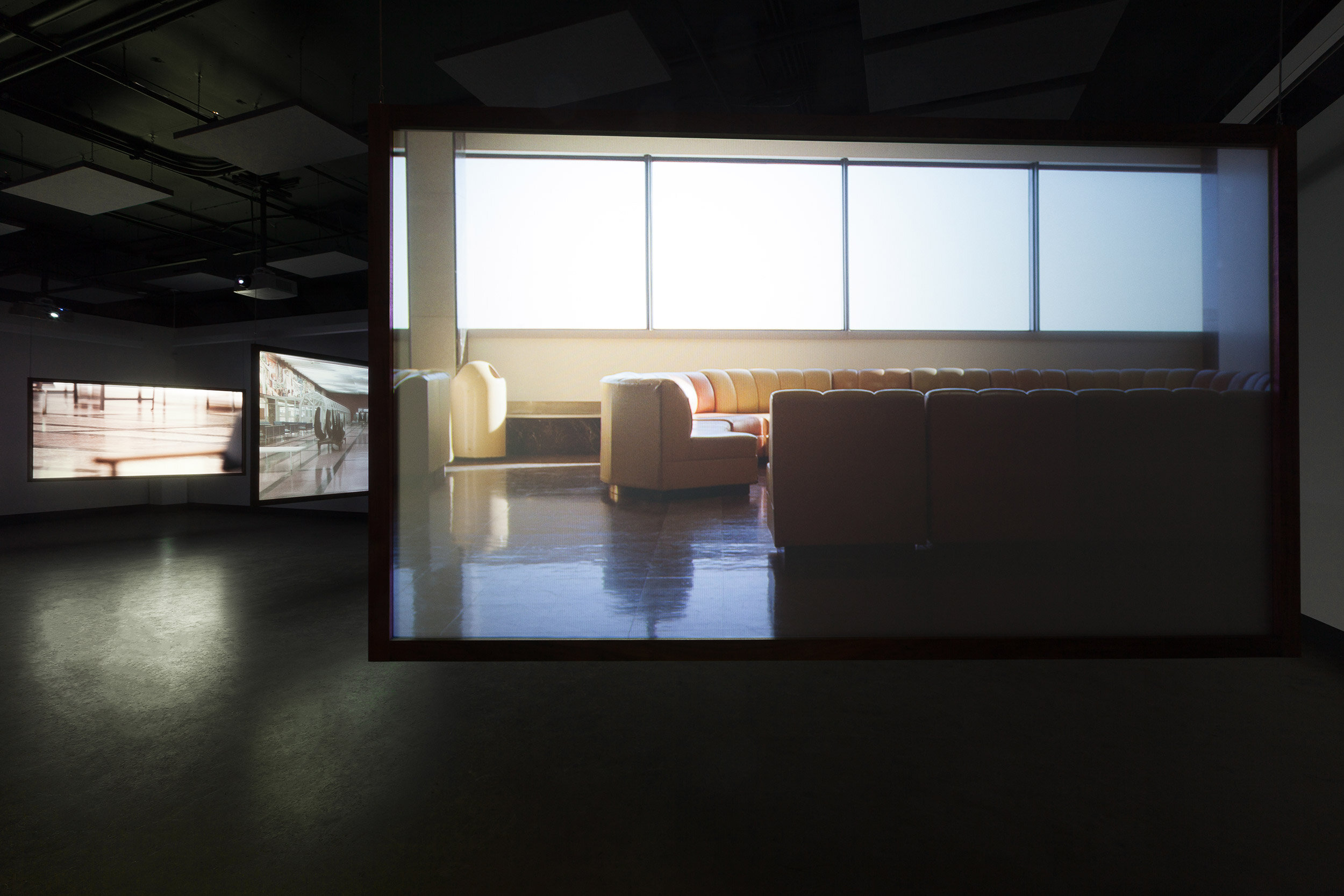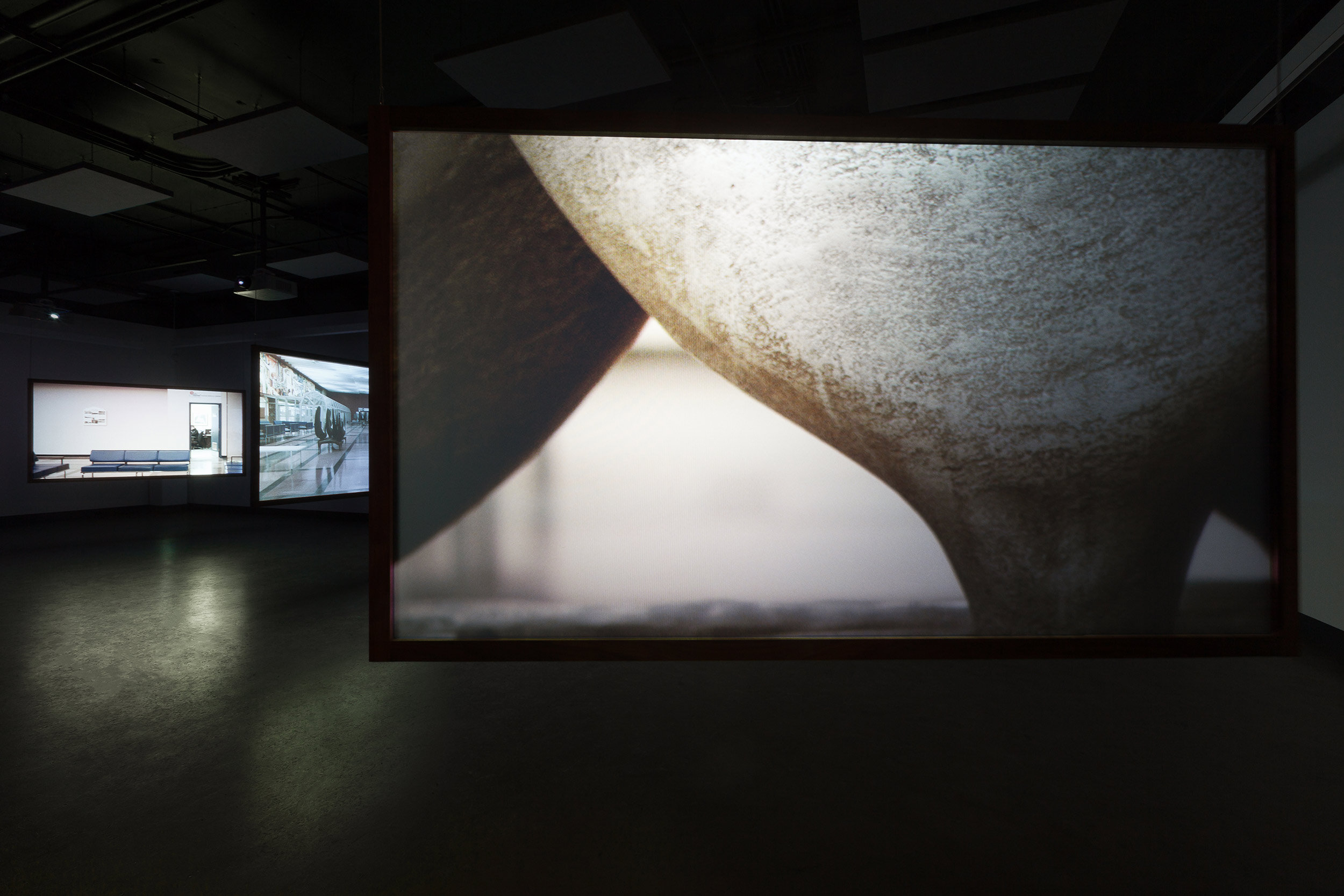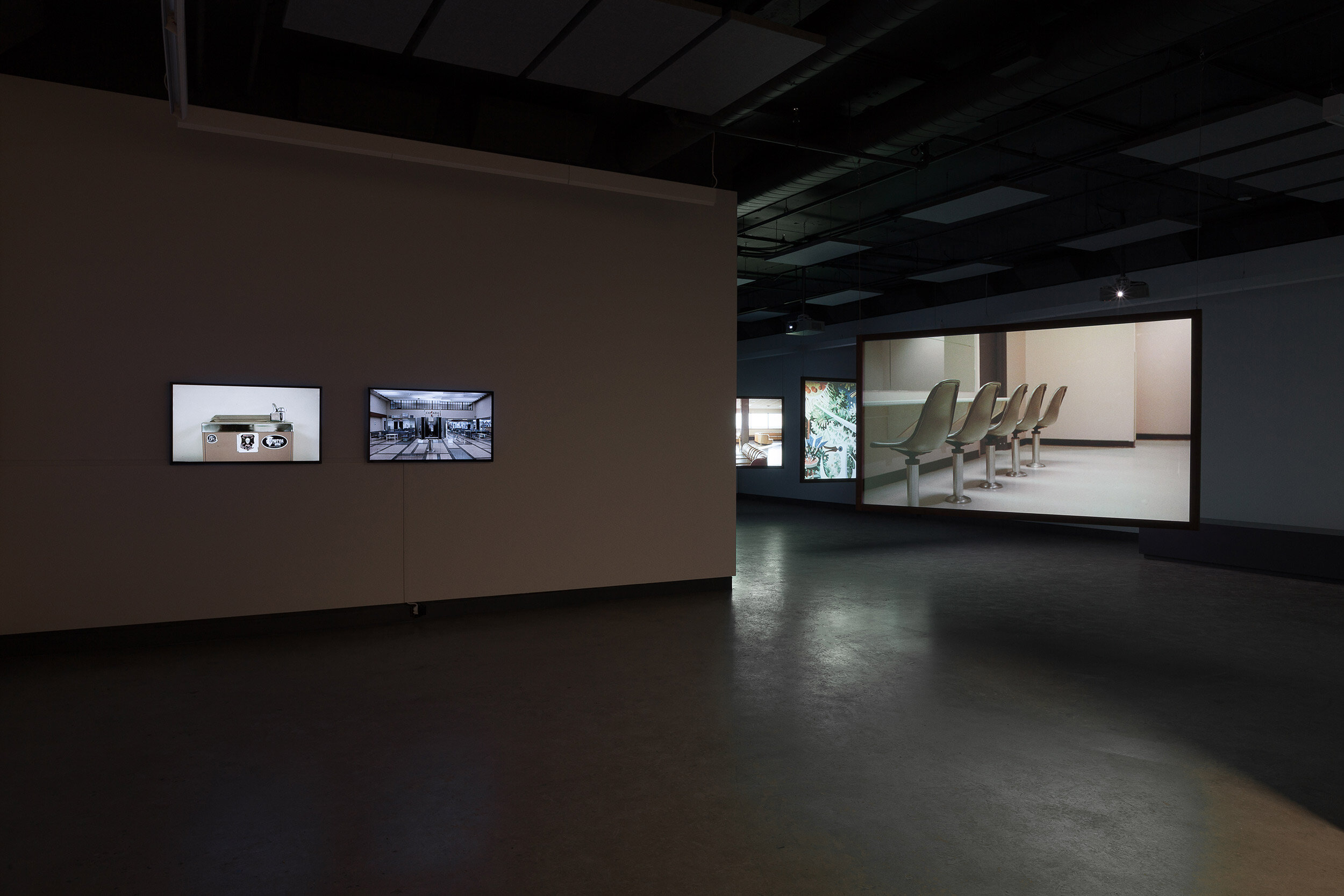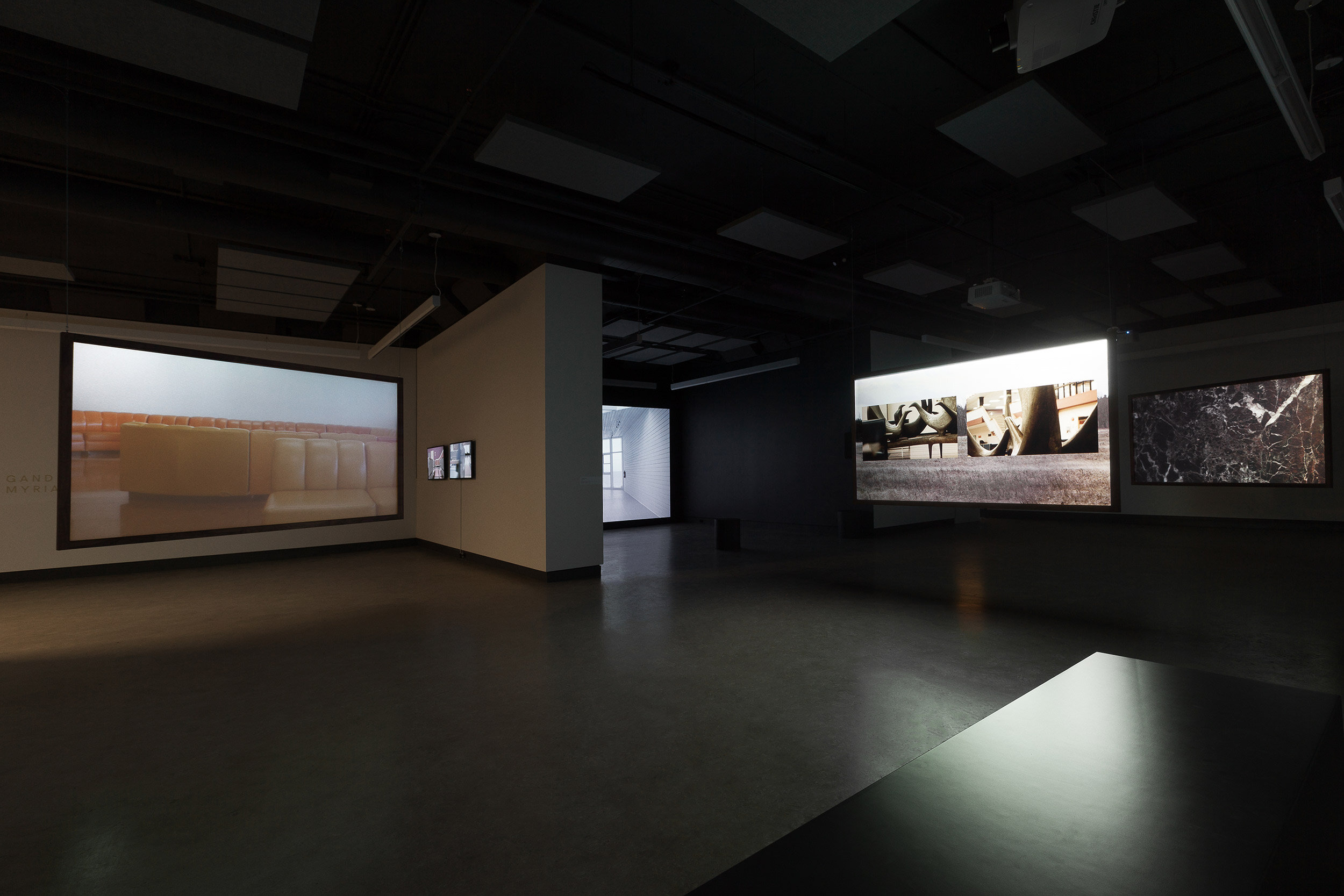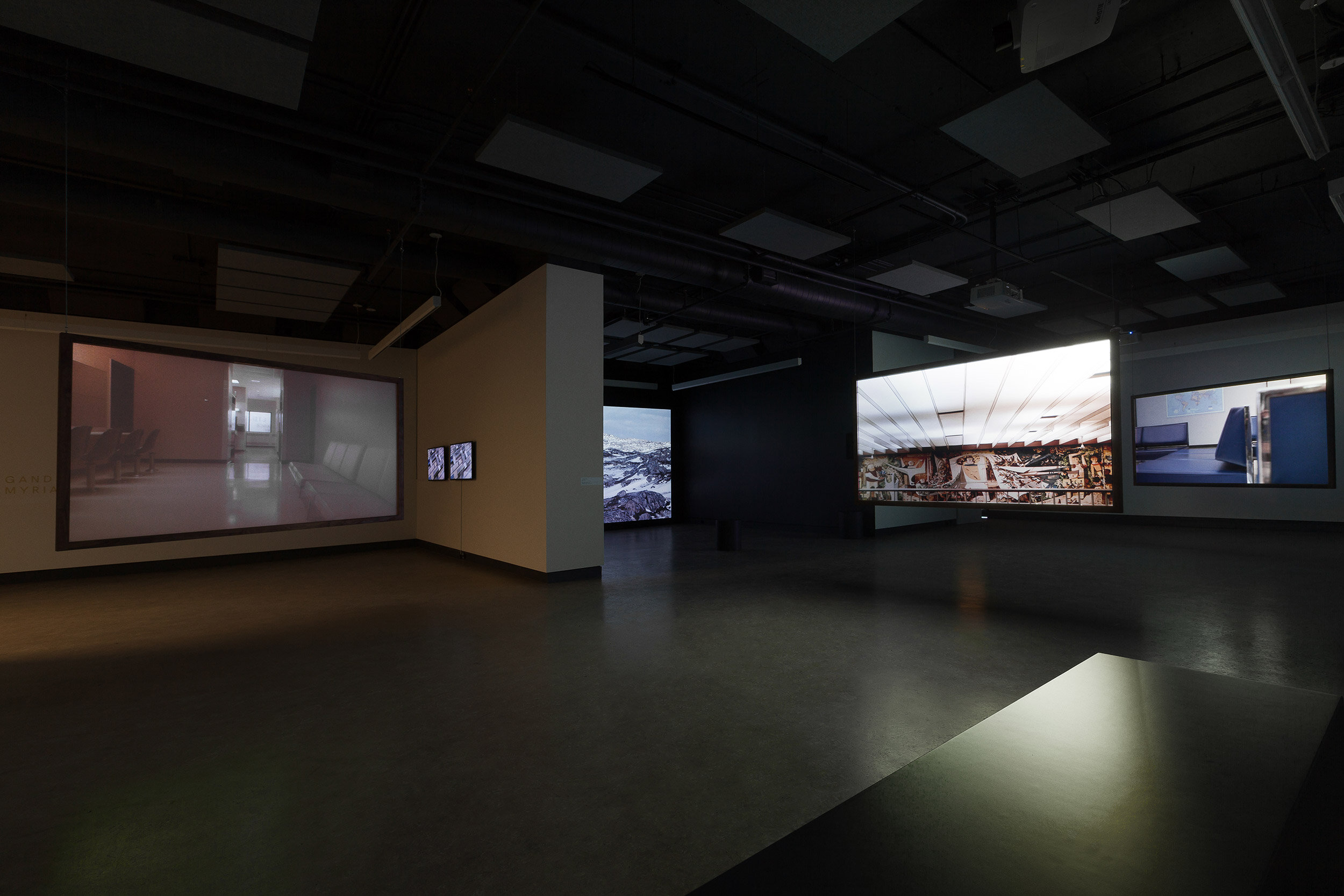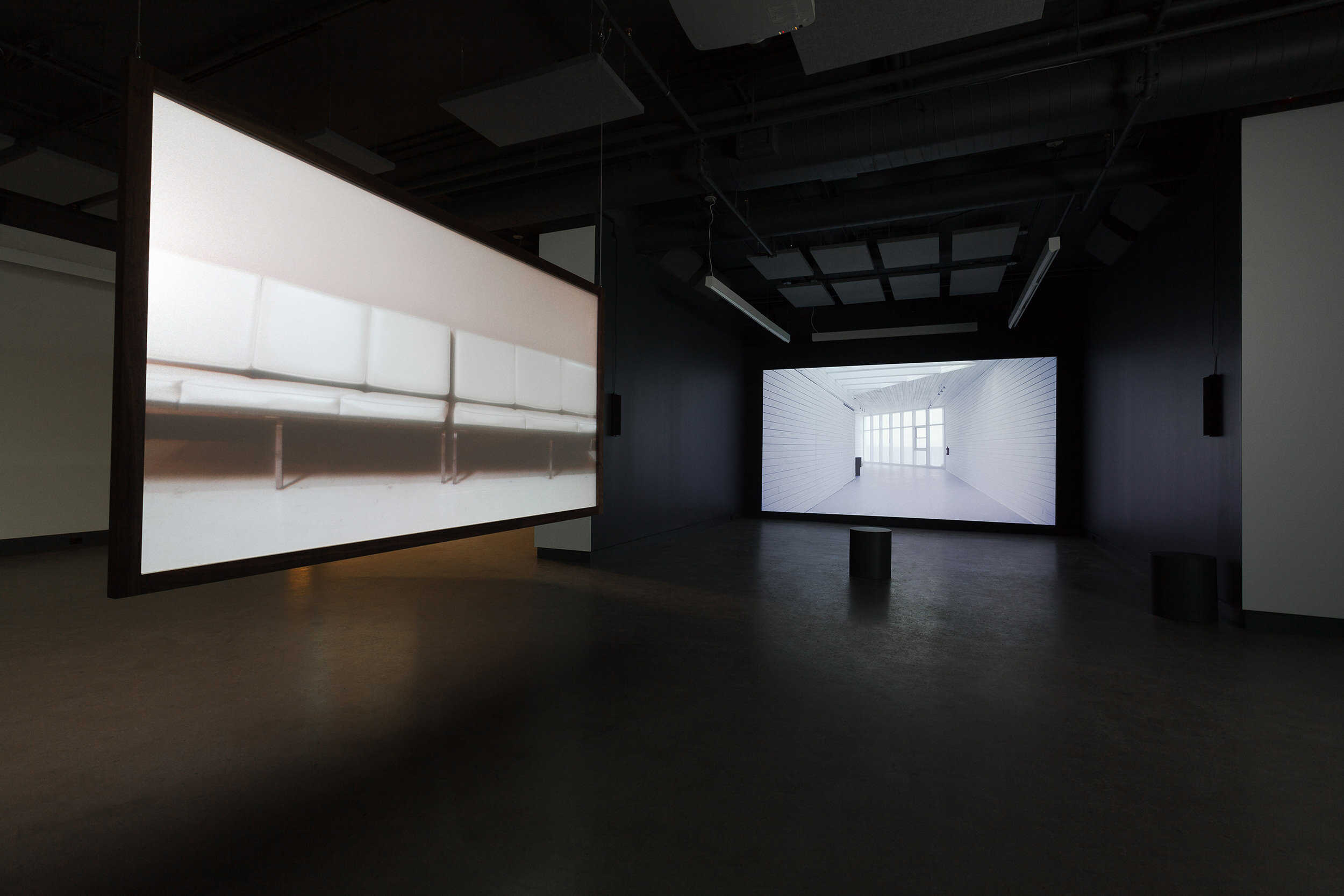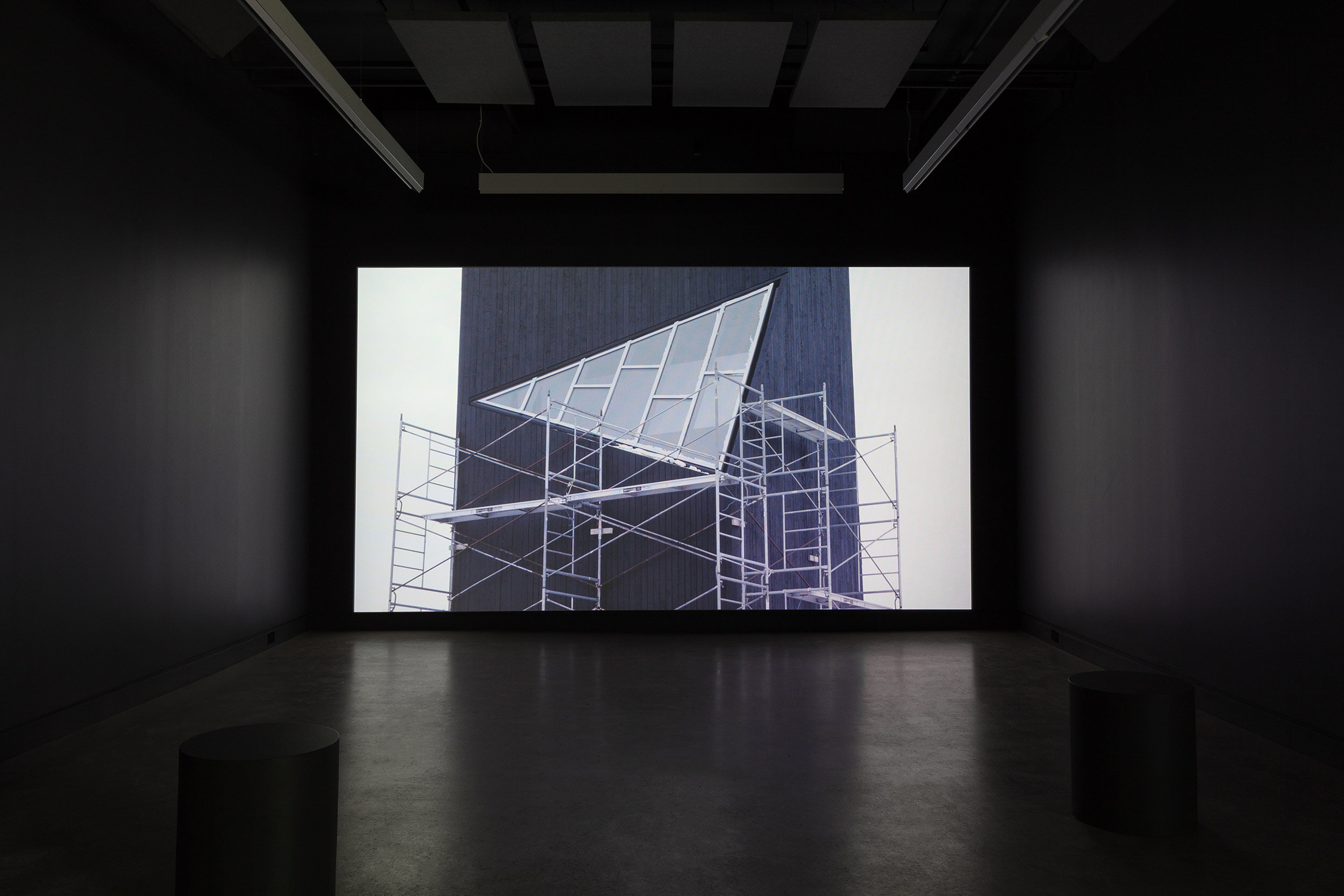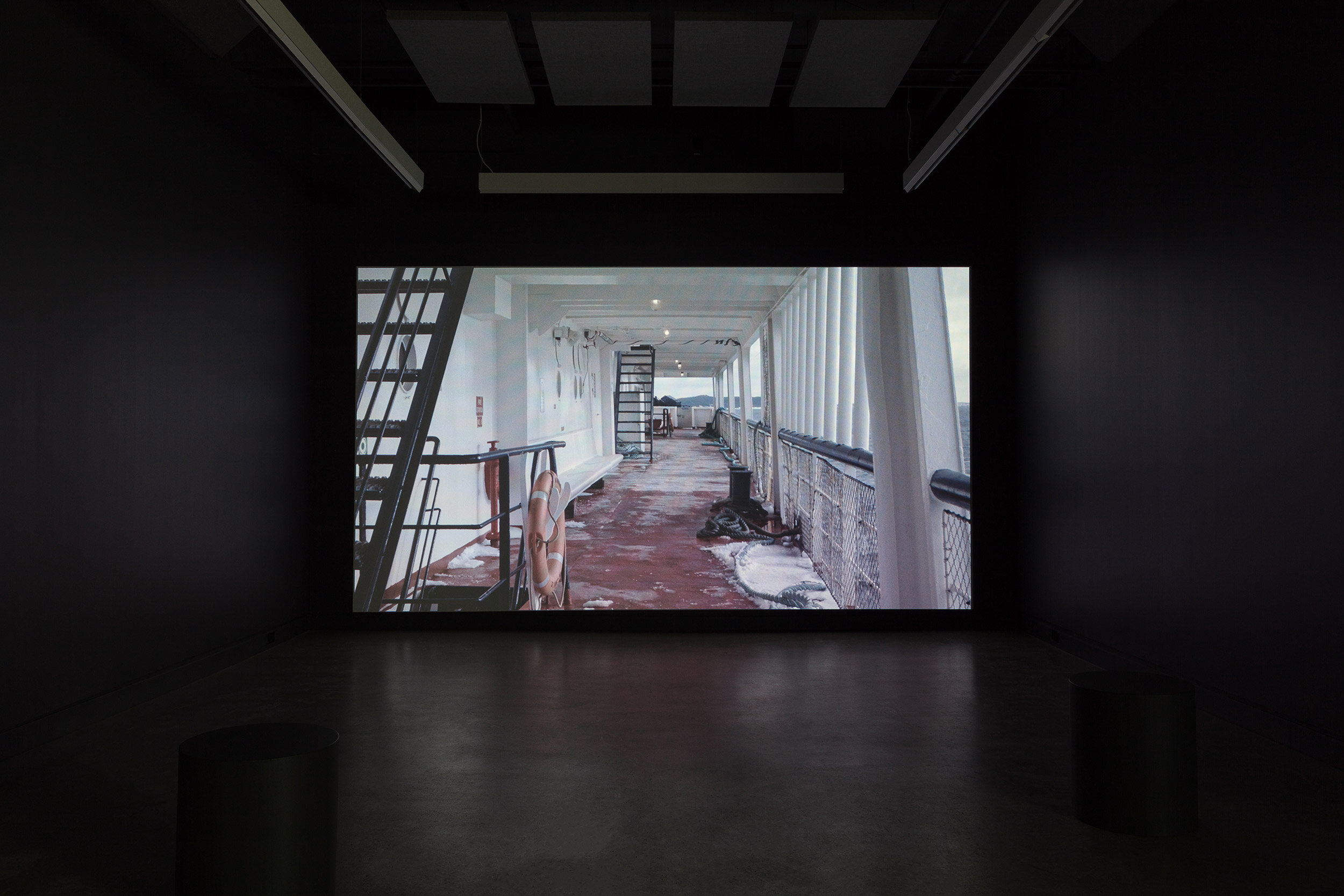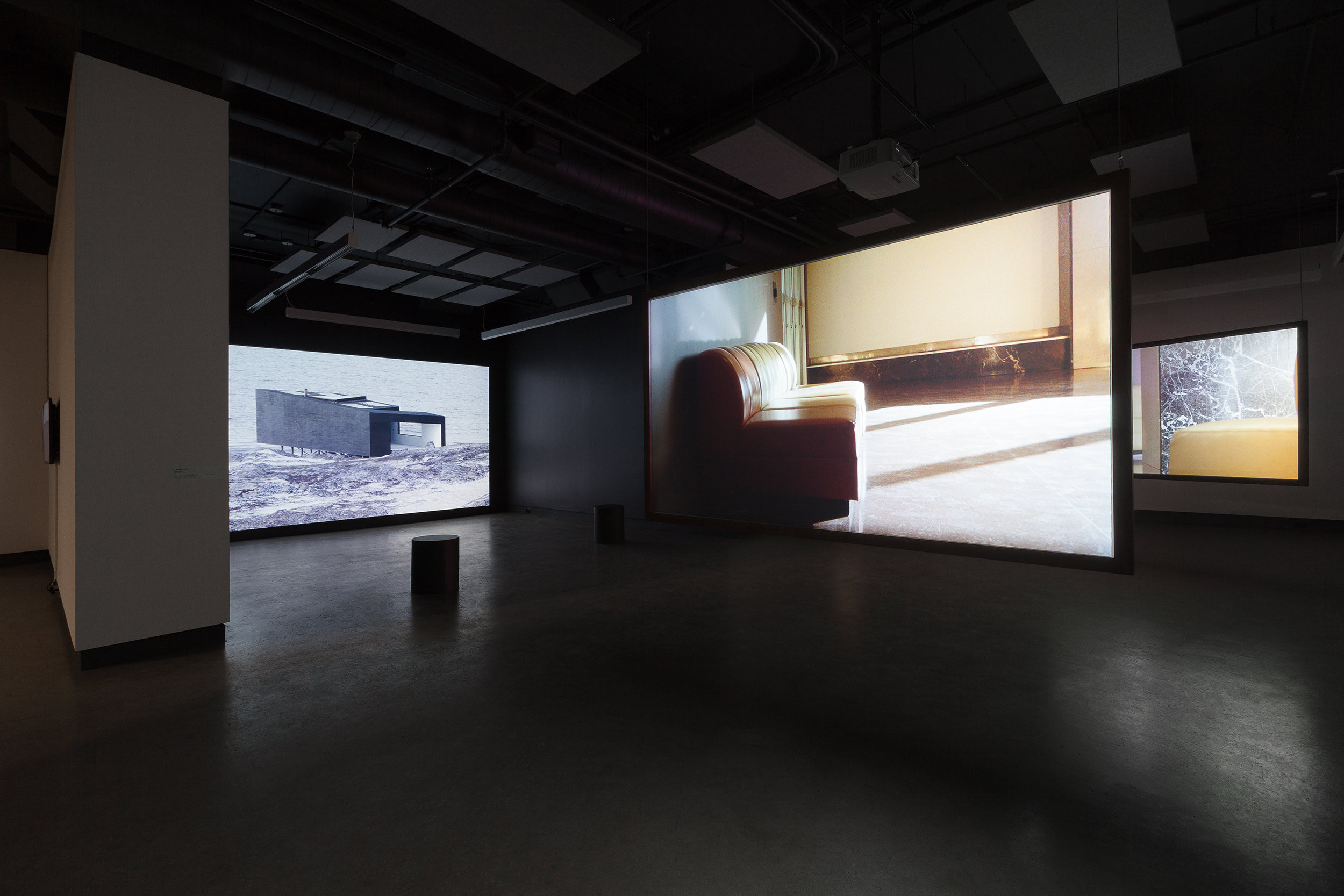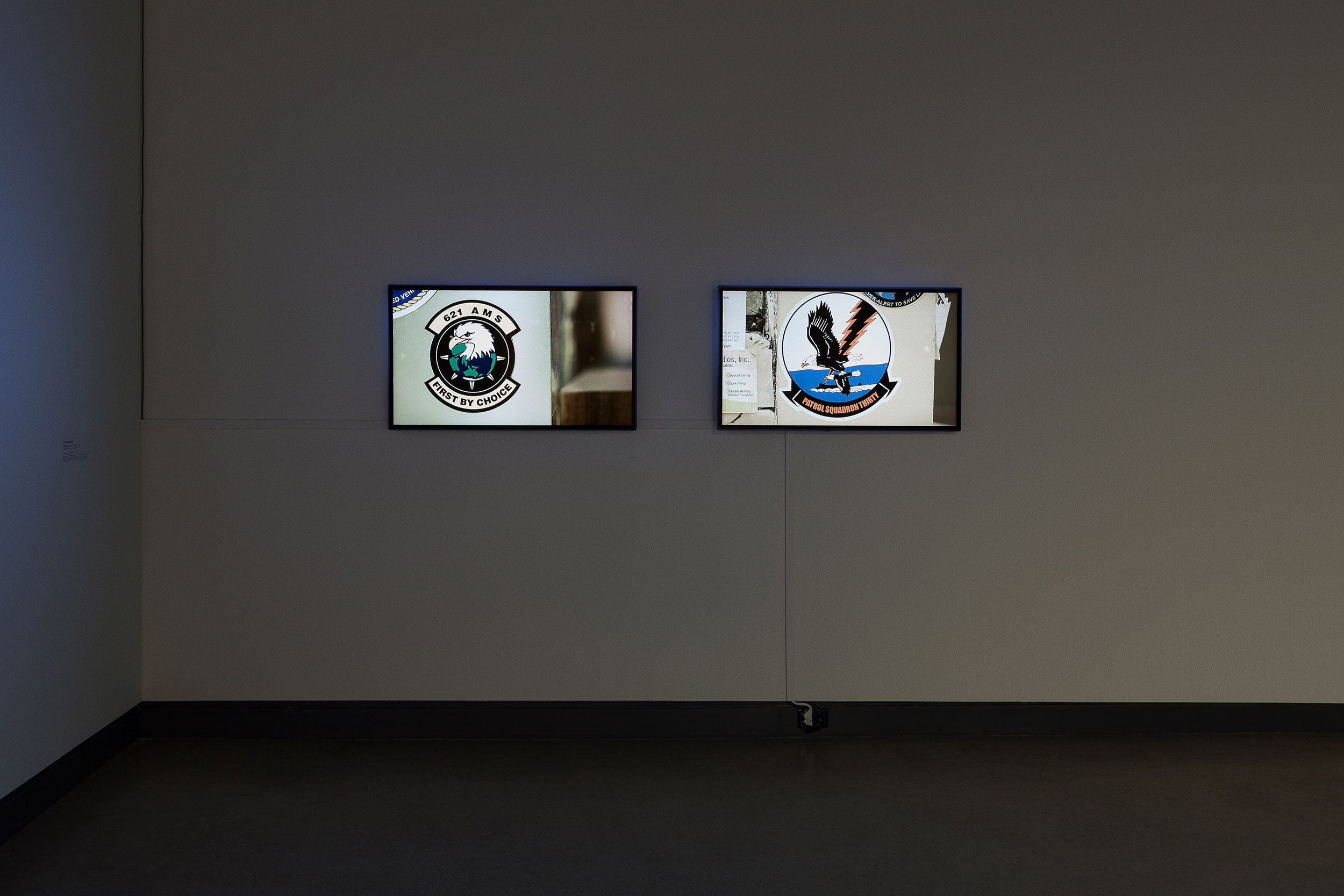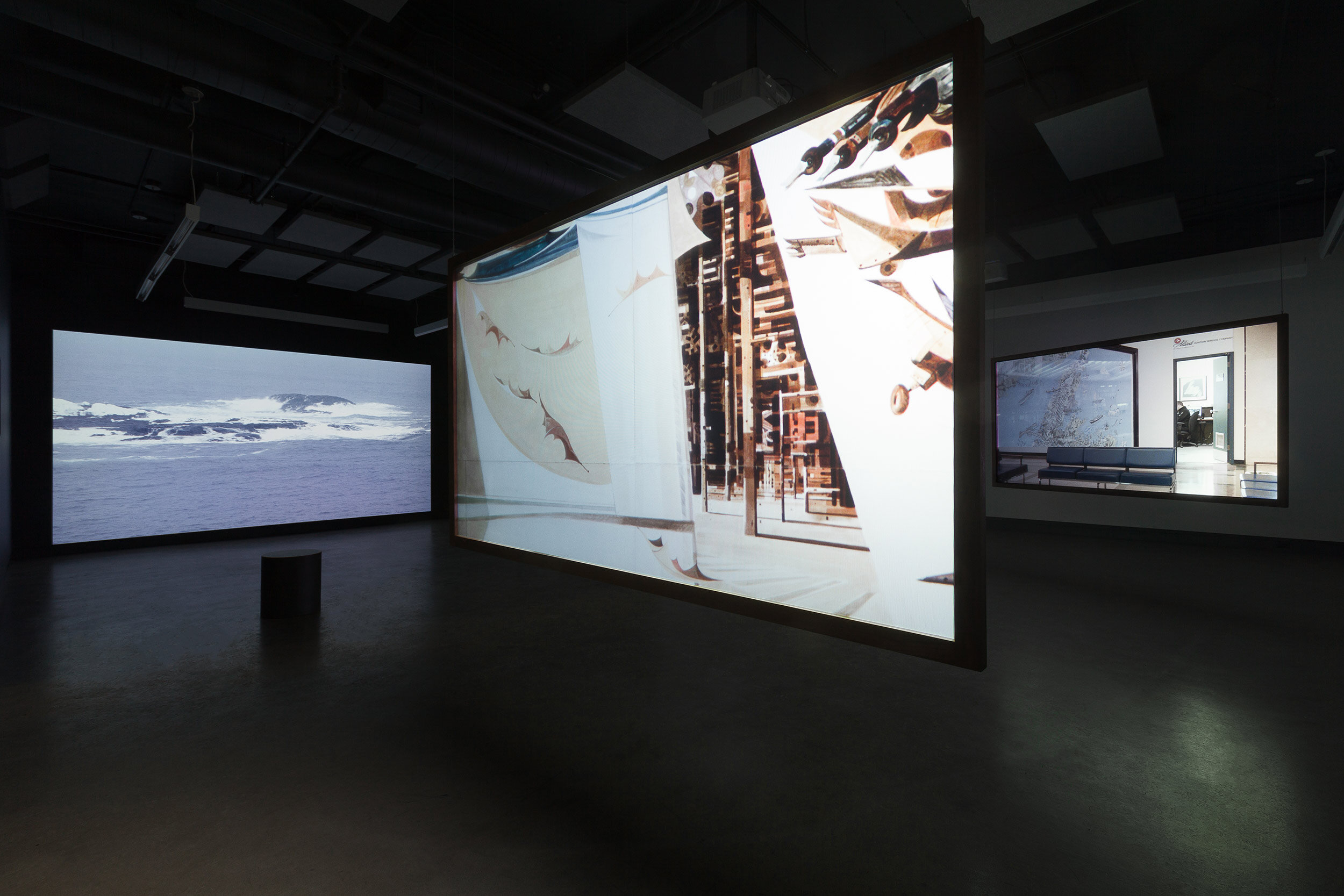Myriam Yates
Gander Islands
From January 11 to March 10, 2018
Opening on January 11 at 7 pm
Taken as a whole, the work of Myriam Yates mobilises the evocative power of singular sites that resonate within the collective imagination. With a photographic gaze, she creates minimalist videographic images that explore the spatial and at times transitory dimensions of these spaces. Interested in the way the sites have been furbished and their distinctive vocation, she examines them from an architectural and urbanist perspective, paying special attention to public spaces. Yates foregrounds the qualities specific to the places she films and judiciously raises the social and political issues affecting our choice of spaces to valorise, abandon or put to new use.
The exhibition Gander Islands brings together three videos connecting two island sites: the Gander International Airport terminal and the Fogo Island Arts artists’ studios on Fogo Island on the west coast of Newfoundland. Although dating from different periods and having different functions, these sites share the reality of being on islands, a fact accentuated by their geographical proximity. Despite this isolation, both the airport and the studios open onto the world through a highly characterised concern for design and architecture.
Gander airport, a four-hour drive from St. John’s, Newfoundland, was built in the late 1950s. The modernist spirit of the age is apparent in its furniture by influential designers such as Ray and Charles Eames and Robin Bush, a commissioned mural by the Canadian painter Kenneth Lochhead and a terrazzo floor with motifs reminiscent of Mondrian. These very strategic aesthetic choices contribute to presenting a progressive image of Canada to travellers in transit―for whom, in most cases, the airport would be their only contact with the country. However, this refuelling stopover necessary for intercontinental flights quickly became obsolete thanks to the rapid progress made in aeronautics. Today the imposing lounge in the international area is practically deserted; only the American armed forces and a few dignitaries flying on private airplanes pass through it on occasion. In a series of fixed shots and brief tracking shots playing in a loop on three large screens suspended in the gallery space, Myriam Yates dissects this incongruous space and, in the slow unfolding of the images, lets the history of the site enter into them. A second work, shown on two monitors, attests to the furtive presence of American soldiers in transit who, breaking the site’s minimalist aesthetic, affix stickers to various spots around the space, indicating the tactical forces they represent.
The single-channel video Island, Lyle, shot on Fogo, an island not far from the airport, also addresses the sensation of the void induced by large spaces, although it bears witness to a different universe. Highlighting the architectural quality of the artists’ studios at the centre of Fogo’s fame, Yates’ footage alternates between geometric, empty and silent interiors and minimalist winter landscapes. These surroundings, imbued with solitude, are curiously inhabited by a young boy who appears to confront the site by adopting a variety of combative positions.
Myriam Yates’ images, captured in what appears at first to be a documentary approach, are an invitation to project upon them other temporalities and to explore liminal zones.
This text has been adapted in part from documents provided by the artist.
Myriam Yates has developed a practice based essentially on the image (videographic, cinematic and photographic). Her work takes the form of large projections, installations and photographic series. She explores the connection between sites and their representation, often basing her projects on modern sites or sites in transition whose singular status interrogates the connections between the individual, modernity and architecture.
Her work has been shown at events such as Kassel Dokfest, Images Festival (Toronto), Rencontres Internationales Paris/Berlin, le Mois de la Photo à Montréal and Nuit Blanche Toronto. It has been the subject of solo and group shows, including at Foreman Art Gallery at Bishop’s University (Sherbrooke); the Hessel Museum of Art—CCS Bard (New York); the Musée d’art contemporain de Montréal; OPTICA, a centre for contemporary art (Montréal); and Galerie de l’UQAM (Montréal). An essay in the journal Prefix Photo on improbable architecture devoted to her video work accompanied an exhibition at Prefix ICA (Toronto). In 2015, she was awarded the Canada Council for the Arts’ Victor-Martyn-Lynch-Staunton award in media art.
Discussion
Myriam Yates and Dustin Valen: Modernism and Architecture in Newfoundland
On February 22, 2018 at 6 pm
Nuit Blanche à Montréal 2018
Vol de nuit
On March 3, 2018 from 7 pm to 1 am
Myriam Yates thanks the Conseil des arts et des lettres du Québec, the Canada Council for the Arts and the SODEC.
This exhibition was organised for Dazibao by France Choinière, in close collaboration with the artist and Dazibao’s advisory committee.
Dazibao receives financial support from the Conseil des arts et des lettres du Québec, the Canada Council for the Arts, the Conseil des arts de Montréal, the Ministère de la Culture et des Communications and the Ville de Montréal.

